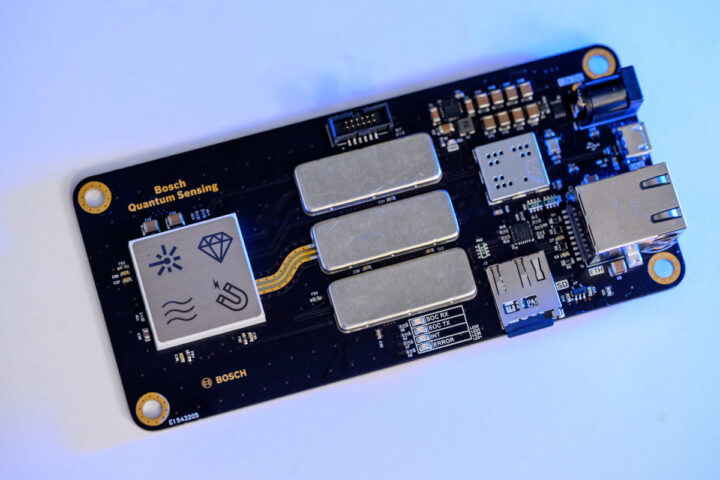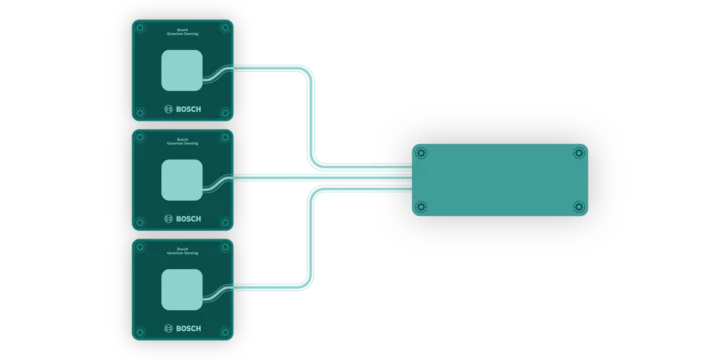Most people have heard about quantum computers, but quantum sensors? I’ve just come across those as Bosch is developing magnetic-field quantum sensors harnessing “the power of quantum physics to enable measurements with unmatched precision” while being much more compact than other quantum sensors using techniques like SQUIDs (superconducting quantum interference device), vapor cells, or optical traps.
Bosch Quantum Sensing (that’s the full company name) further explains its magnetic-field quantum sensors surpass the capabilities of conventional sensors by offering a wider measurement range, higher sensitivity, and higher spatial resolution. They currently have an internal quantum sensor prototype/evaluation board that’s about the size of a smartphone, so they are still quite larger than traditional sensors.
Bosch quantum magnetometer can measure tiny magnetic field variations with accuracy, including the Earth magnetic’s field, and even analyze the direction of and magnetude of magnetic fields giving the equivalent of a 3D-point magnetic representation. This notably enables biomedical applications such as magnetocardiography (MCG), a contactless alternative to ECGs to track heart activity, and this also applies to brain-computer interfaces (BCIs), meaning quantum sensors might also end up in consumer devices like virtual/extended reality headsets. Another use case is indoor navigation or other locations where GPS signals are weak, unavailable, or jammed.
So how does it work exactly? Bosch explains its quantum sensing magnetometer uses a diamond as the core sensing element with nitrogen atoms added as a defect, known as NV (Nitrogen-vacancy) centers, to provide additional electrons acting as tiny magnetic field sensing elements.
Here are more details about the internal directly from the website:
These NV centers change the diamond’s optical and electronic properties. When green laser light is shone on the diamond through an optical focusing unit, it excites the electrons within the NV centers to a higher energy level. As the electrons return to their ground state, they emit photons, visible as red light, which is separated through an optical filter and then detected by a photodiode.
The key phenomenon, however, is that the energy levels of the NV centers are highly sensitive to changes in the external magnetic field, which enables them to be used as a quantum based on the Zeeman effect. These quantum states are accessible via microwave radiation. When electrons occupy these levels and are excited by the green laser light, they no longer decay by emitting red photons but instead remain “dark.” By varying the frequency of the microwave radiation and observing changes in the intensity of the emitted red light, we can precisely determine the strength of the external magnetic field.
If you prefer a more visual explanation, you can check out the video embedded below.
What’s unclear to me right now is when the company plans to commercialize such sensors. I only found about it as Bosch recently established a joint venture with Element, six a producer of synthetic diamonds, called “Bosch Quantum Sensing”. More details may be found on the new company website.
Thanks to TLS for the tip.

Jean-Luc started CNX Software in 2010 as a part-time endeavor, before quitting his job as a software engineering manager, and starting to write daily news, and reviews full time later in 2011.
Support CNX Software! Donate via cryptocurrencies, become a Patron on Patreon, or purchase goods on Amazon or Aliexpress






